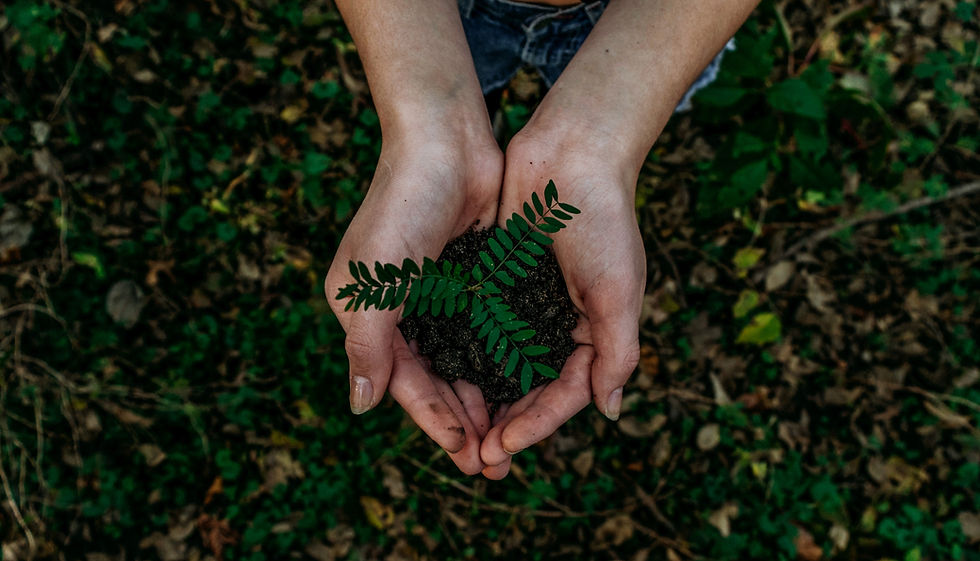As the push for planet-friendly options across all sectors continues to grow, graphic design is joining the environmental revolution. Paper use, ink pollution and energy-wasting processes are becoming things of the past, as designers seek to lower their carbon footprints and use more sustainable, eco-friendly materials. Read on to learn about the environmental impact of traditional graphic design and what the green future of this industry will look like.
The environmental issues with traditional graphic design
There are a number of environmental problems in traditional graphic design processes. Firstly, as a paper-heavy industry, it has been a significant contributor to deforestation and excessive paper waste. The colourful inks used to produce things leaflets, menus and posters have often used harmful chemicals which contribute to air pollution during the printing process, and soil and water pollution when the items are thrown away. The production of paper itself, as well as the design and printing processes, have historically been energy-heavy, contributing to carbon emissions as well as plastic and electronics waste that are not easily biodegradable. So how are designers working to overcome these issues? Let’s explore the principles of eco-friendly graphic design.
Keeping things simple - embracing minimalist design
Along with the wider design trend of clean, minimalist spaces, foods and manufactured goods, greener graphic design often starts with a focus on simplicity. Reducing fussy, unnecessary elements not only leads to aesthetically pleasing designs but requires fewer resources to produce in hard copy form.

Eco-friendly materials
Graphic designers are increasingly looking for more sustainable materials to work with. Recycled and unbleached paper and card are popular choices, with bonus green points for materials that can be composted after use. There is even a growing trend for seed paper, which as the name suggests has seeds embedded into recycled paper so that new plants actually sprout from it as it breaks down. Botanical Paperworks and Papel Con Semillas are just two of the many companies offering this innovative product.
Ink is another area where designers are looking for more sustainable alternatives. Reducing the use of ink with polluting Volatile Organic Compounds (VOCs) and sourcing vegetable-based, biodegradable inks can make a big difference here.
Improving energy efficiency
Graphic designers are looking to cut their reliance on energy-heavy processes and materials. New generation printers use less power than their predecessors and design studios are also turning to renewable energy to lower their carbon footprints. Optimising workflows by recycling design elements, incorporating more modular designs that can be quickly updated, and switching to more user-friendly design software that can create designs faster are all great options.
Do you need to print that?
As with all other industries, digital products are increasingly popular in graphic design. Whether it is the rise of e-books, or the use of QR codes in place of printed items such as menus, maps, or event brochures, designers and clients are looking for more ways to incorporate digital elements rather than hard-copy products. As well as having sustainability advantages, digital products can be delivered more quickly, can be easily updated and can be viewed remotely.
For even more environmentally friendly graphic design, checking the carbon efficiency of your servers and web hosts can also make a difference. Check out Terramovement’s guide to making an eco-friendly website for advice.
Tools to support greener graphic design
Cloud-based software - Using cloud-based design tools makes collaborating with your designer easy and efficient. Designs can be viewed and edited without the need for in-person meetings, long email chains or printed samples. This streamlines the process, saves energy and cuts down on waste
Vector graphics software - Popular design software such as Adobe Illustrator uses vector graphics, meaning designs can be scaled up and down without losing image quality. This removes the need for multiple versions of the same design, saving not only time but energy use.
Sustainable design inspiration
Looking for some examples of graphic design focussing on sustainability? Check out these trailblazers proving that great design doesn’t have to cost the earth.
Design agency Pentagram has a dedicated sustainability team and works on a variety of projects across the world to incorporate eco-friendly elements into branding and packaging.
Clothing company Patagonia have long been recognised as leaders in sustainable business practices. Their Worn Wear campaign includes great design elements that emphasise the durability of their products, encouraging customers to buy high-quality, long-lived items.
Food delivery company Grubhub has recently rebranded to become more sustainable. As well as switching to packaging made with recycled materials, they have simplified their logo and branding to reduce energy consumption and ink wastage.


Comments